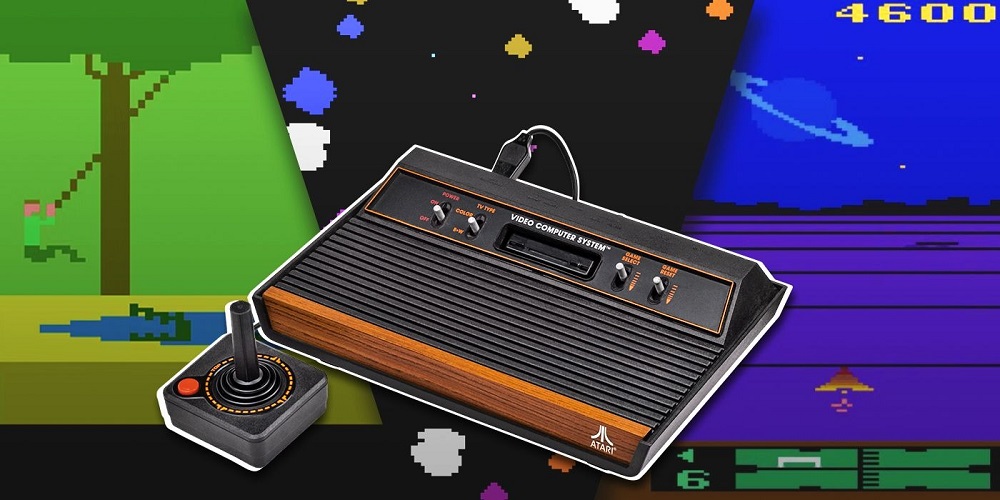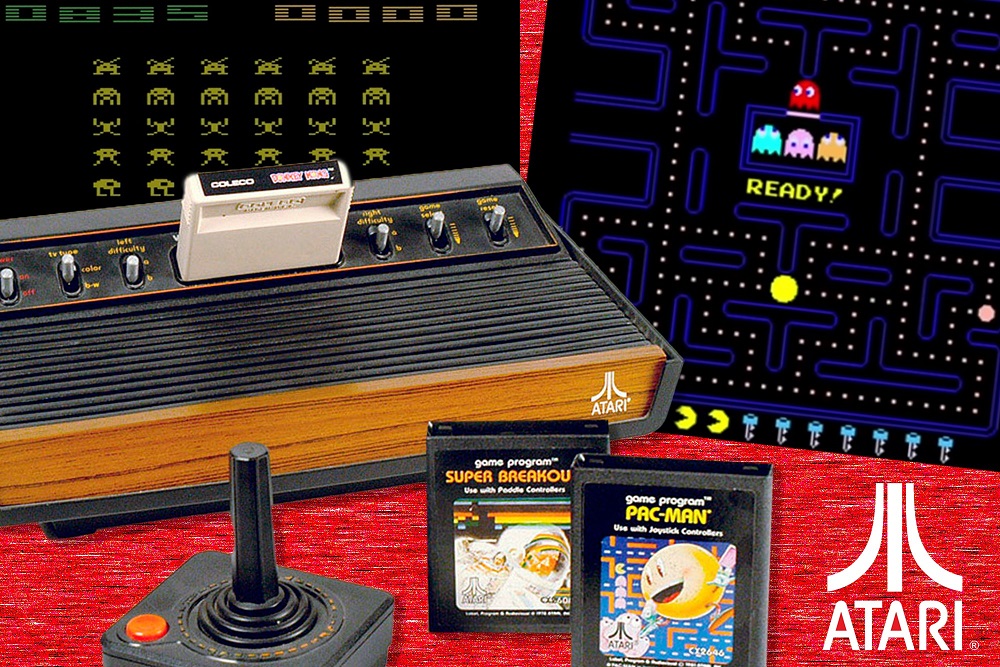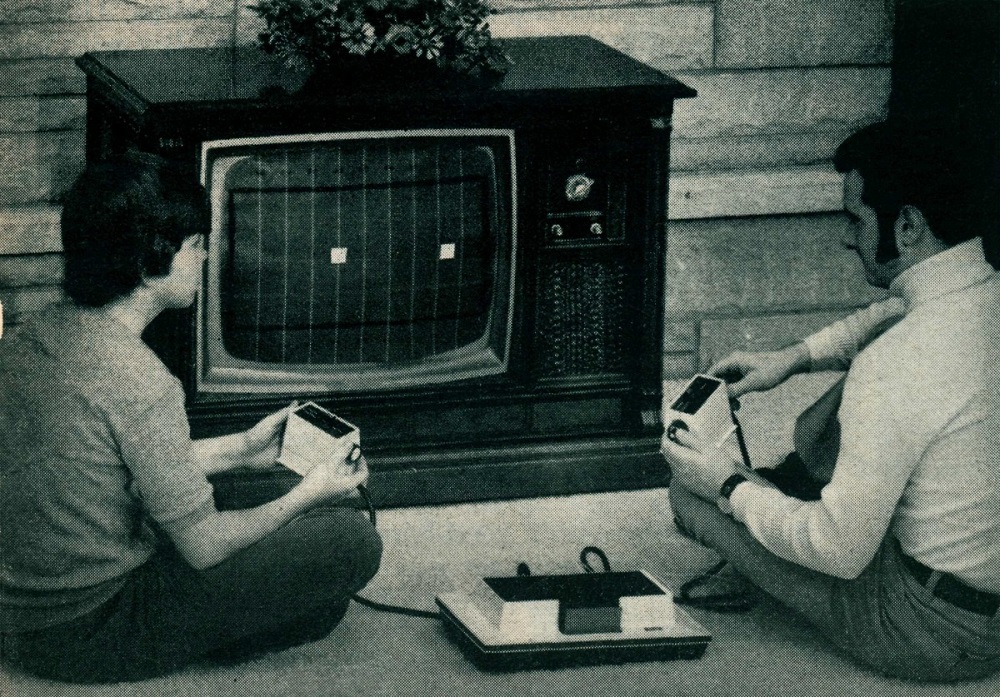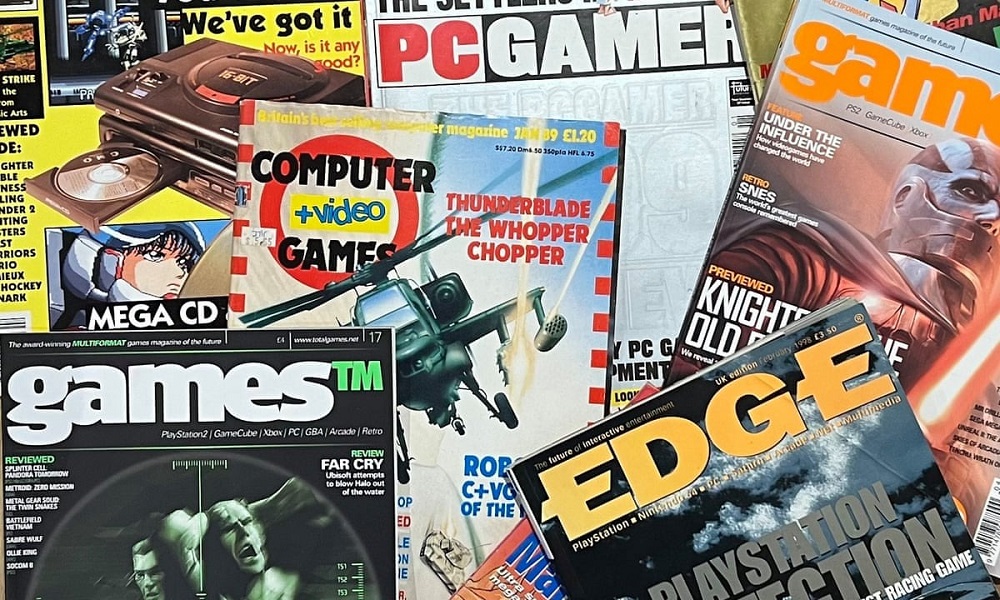In the late 1970s, something magical came to life in living rooms across America. Bulky wood-paneled TVs no longer just broadcast sitcoms or news — they became playgrounds. And the reason? A sleek little console with a joystick, woodgrain finish, and game cartridges that promised endless adventures. That console was the Atari 2600, and it didn’t just entertain — it transformed what “gaming” meant forever.
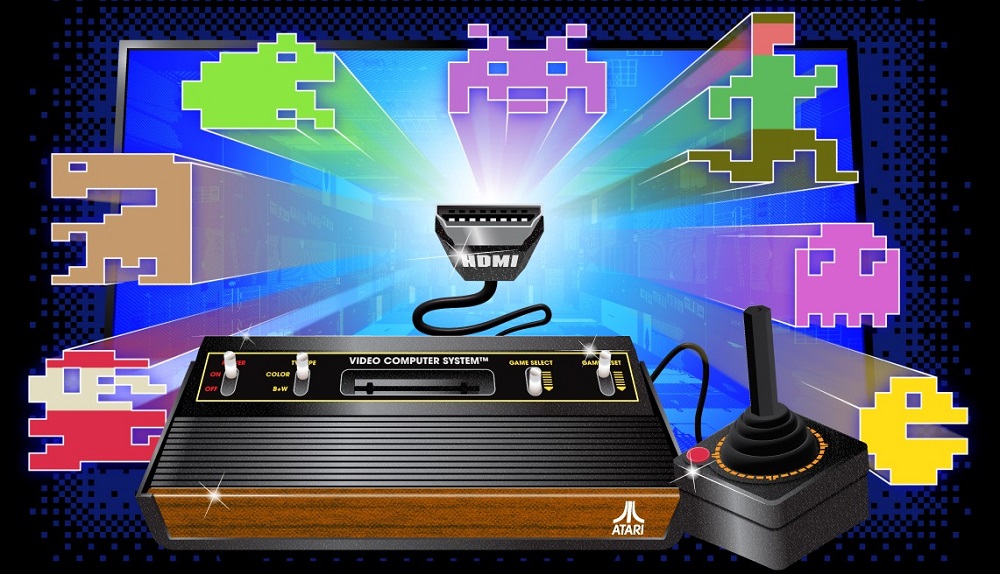
Before its release in 1977, video games lived in arcades or on rare experimental systems like the Magnavox Odyssey. But Atari dared to think bigger: what if people could bring that arcade thrill home? What if games weren’t locked to one device, but lived on cartridges you could swap, trade, and collect? The 2600 answered those questions — and changed entertainment history.
From VCS to Vanguard: The Launch That Changed Everything
Released in September 1977 as the Atari Video Computer System (VCS), the console arrived with just a handful of games like Combat and Outlaw. They were simple, yes — two-player tanks and cowboy shootouts — but the idea that you could insert a new game into your console? That was revolutionary.
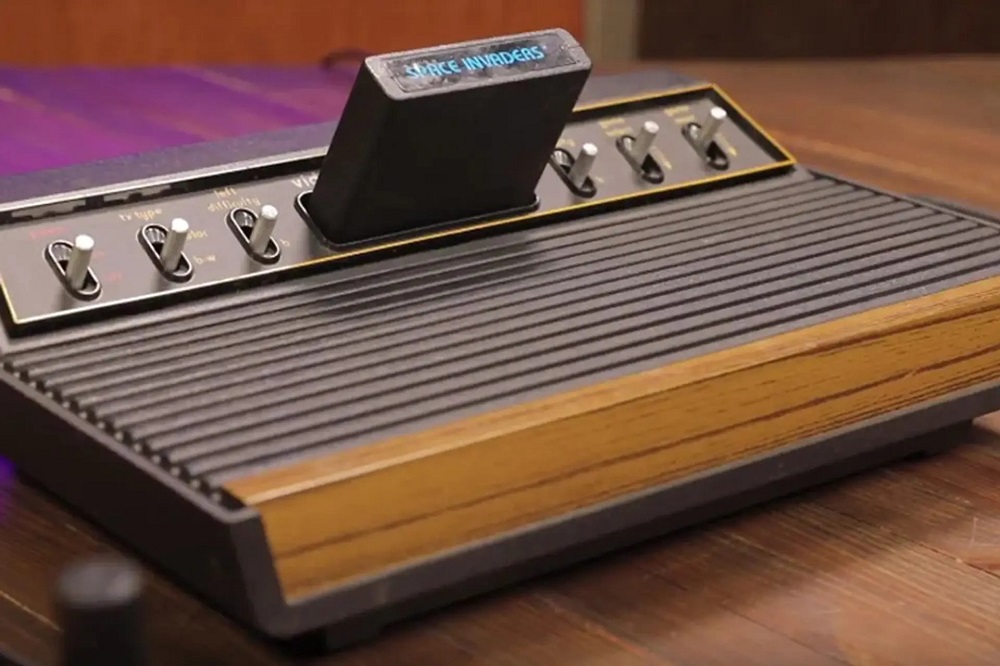
With a modest setup — only 128 bytes of RAM, a MOS 6507 processor, and the TIA graphics chip — the Atari 2600 didn’t wow with specs. But its cartridge-based system opened the door to limitless expansion. Players weren’t tied to built-in games. Suddenly, gaming was modular.
Its design helped too. The console’s faux woodgrain finish matched home furniture, while its joystick was intuitive and rugged. One stick, one button — easy enough for kids, satisfying enough for grown-ups.
To help build excitement, Atari partnered with Sears to distribute the console under the “Tele-Games” brand. This increased visibility in retail stores and helped move the console into the hands of mainstream families — not just tech hobbyists
Bringing the Arcade into the Living Room
During the late ’70s and early ’80s, arcade games ruled pop culture. Games like Space Invaders, Asteroids, and Pac-Man were swallowing quarters coast to coast. Atari capitalized on this boom by securing home licenses for hit titles.
The 2600 version of Space Invaders in 1980 was more than a game — it was the world’s first killer app. It quadrupled console sales and proved that arcade magic could live in your living room.
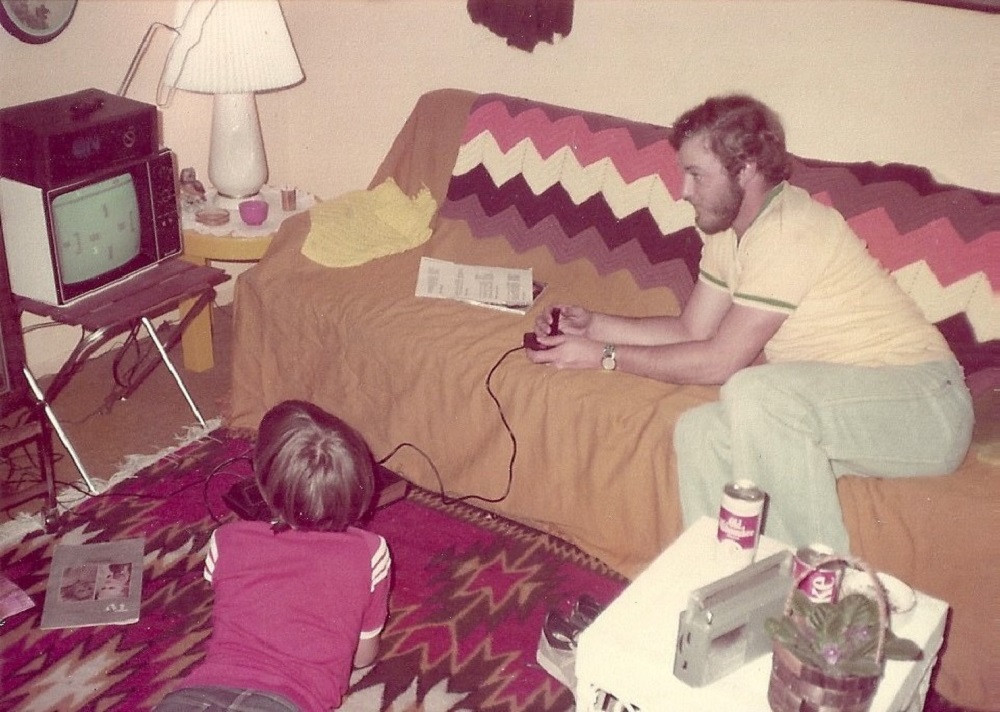
Suddenly, homes weren’t just watching games — they were playing them. Siblings competed, parents joined in, and weekend sleepovers were filled with Pitfall!, Breakout, and Adventure. A new social ritual was born: playing video games at home.
Other classic games followed:
- Adventure (1980) introduced one of the first open-world exploration mechanics and even included a secret Easter egg — a hidden developer credit.
- Pitfall! (1982) became a sensation, combining platforming with time-limited jungle treasure hunting.
- Yars’ Revenge (1982) pushed visual and sound boundaries and remains one of the most beloved original titles.
These games weren’t just fun — they were creative, imaginative, and often way ahead of their time.
Power in Simplicity: Technical Genius Behind the Scenes
The 2600 wasn’t powerful, but it was flexible. Developers discovered tricks like racing the beam — synchronizing code with the TV’s scanlines — to create effects that seemed impossible on paper.
The joystick became iconic: one button, one stick, endless fun. It was so simple that it became a standard in game design for years.
Even the box art told stories. Atari’s illustrations were far more detailed than the games themselves, inviting players to use their imagination — an essential part of early gaming culture.
Perhaps more impressive, the 2600 kept evolving thanks to the talent of its developers. Some of the most technically advanced games appeared in 1982–1983, six years after the system’s launch — a testament to its versatility and longevity.
From Fad to Phenomenon: Atari’s Cultural Takeover
By 1982, the Atari 2600 had sold over 10 million units. It wasn’t just a console anymore — it was a symbol. Kids carried Atari lunchboxes, saw ads on TV, and dreamed of becoming “Atari champions.” Celebrities endorsed games. Even cereal boxes had promotions.
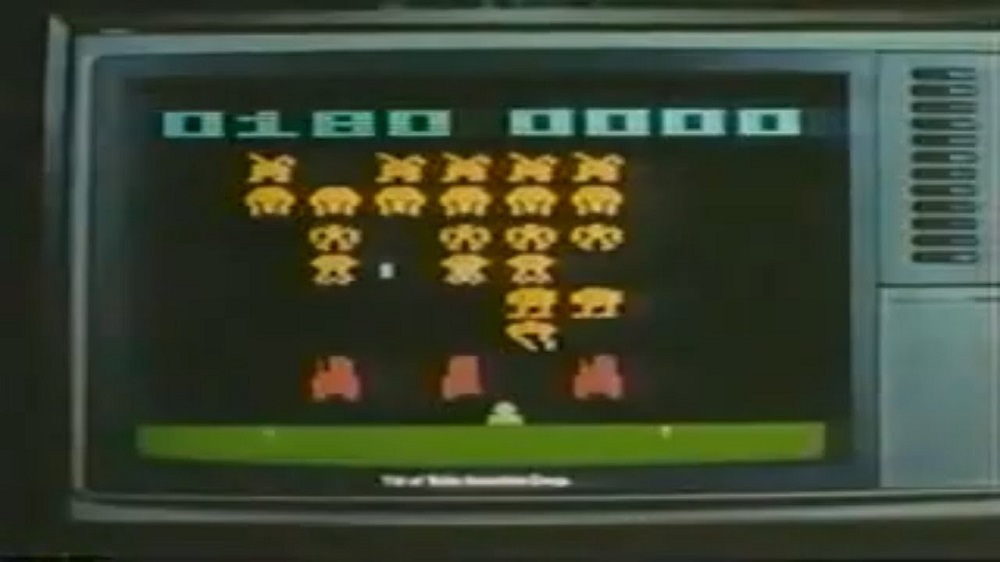
Gaming shifted from niche hobby to mainstream family activity. It changed how people used their TVs, transforming them from passive screens into interactive spaces.
Atari also helped define early gaming media. Game review magazines like Electronic Games began publishing in 1981, shaping player opinions and building a shared vocabulary around gameplay, difficulty, and graphics.
Of course, success brought problems. An oversupply of low-quality games eventually led to the video game crash of 1983, but the foundations Atari laid survived and evolved. Many lessons learned during the 2600’s boom and bust cycle informed how Nintendo approached the NES just a few years later.
Still Plugged In: Why the 2600 Lives On in 2025
Even now, the Atari 2600 holds a special place in retro gaming circles. Collectors scour eBay and conventions for working units, rare cartridges, and original packaging.
To play it today, you can use RF-to-HDMI converters for modern TVs. Or go digital with emulators like Stella, or hardware clones like the Atari Flashback.
Modders even upgrade original consoles with composite video output, pause buttons, or SD card slots. And yes — some cartridges, like Air Raid or Red Sea Crossing, can fetch thousands of dollars due to their rarity.
There are also active online communities sharing manuals, overlays, and artwork — helping new generations rediscover the charm of pixelated graphics and analog gameplay.
If you’re new to the Atari world, start with:
- Adventure — for exploration
- Yars’ Revenge — for fast-paced action
- River Raid — for smooth scrolling and challenge
They still shine with creativity and timeless gameplay.
The Enduring Legacy of the Atari 2600
The Atari 2600 didn’t just launch an industry — it launched a way of life. It gave birth to home consoles as we know them. Its plug-and-play model, licensing of games, and controller standard paved the way for everything from the NES to the PlayStation and beyond.
Sure, its graphics were pixelated. And the sound? Beeps and boops. But what mattered was the feeling — the joy of control, the thrill of exploration, and the belief that games belonged not in arcades, but in homes.
It also inspired generations of developers. From Shigeru Miyamoto to indie game creators today, many cite early Atari games as their first spark of inspiration.
Atari’s risk-taking, creativity, and ability to connect people through play remain part of its legacy — one that lives on in every controller, console, and digital adventure today.
What’s Your Favorite Atari 2600 Memory?
Did you grow up with the 2600? Was your favorite game Frogger, Pac-Man, or something obscure like Kaboom!? Whether you’re a longtime collector or a curious newcomer, the legacy of Atari lives on in every modern game you play.
Drop your favorite memory or recommendation in the comments — and let’s keep the retro spirit alive.
